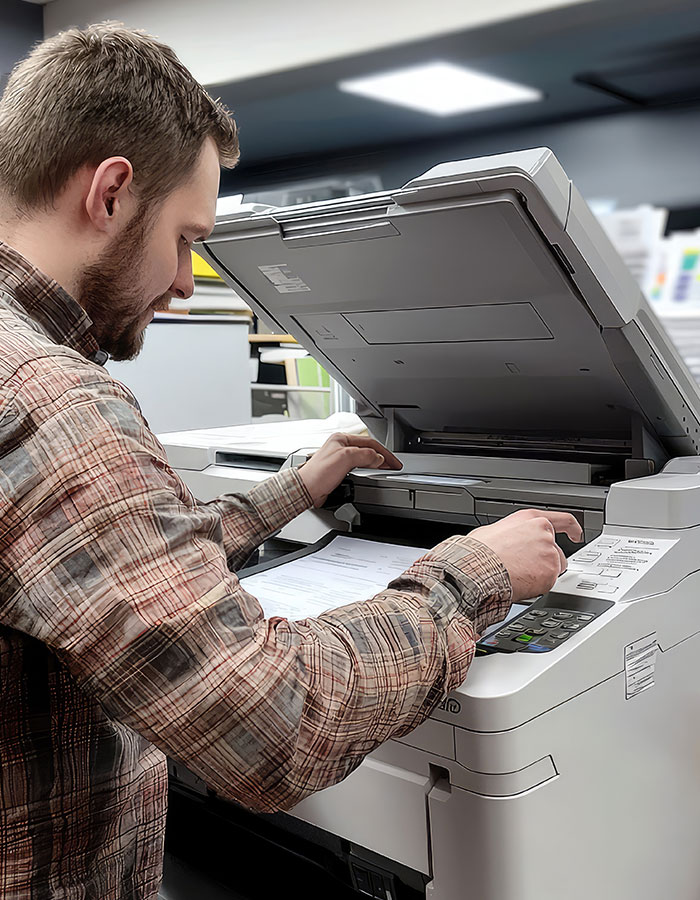FAQs : Printer
Common reasons include incorrect printer settings, connectivity issues, or empty ink/toner cartridges. Check the printer's connection, ensure it is set as the default printer, and verify that cartridges are properly installed and not empty.
Printing blank pages can result from empty or clogged ink cartridges or incorrect printer settings. Check ink levels, clean the printhead if necessary, and make sure the printer settings are correct.
Poor print quality can be due to low ink levels, clogged printheads, or incorrect paper type settings. Check and replace ink cartridges if needed, clean the printheads, and ensure you’re using the correct paper type for your printer.
Sometimes paper jams can be due to small bits of paper stuck inside the printer or sensor malfunctions. Check all paper paths for any obstructions, remove any visible paper bits, and reset the printer.
Connectivity issues can stem from network problems, incorrect settings, or faulty cables. Check the network connection, ensure the printer is correctly set up in your computer’s settings, and verify all cables are securely connected.
Streaks or lines in printouts often indicate clogged printheads or low ink levels. Clean the printheads using the printer’s maintenance tools and check ink levels to ensure they are adequate.
Verify that the printer is within range of the Wi-Fi network and that the Wi-Fi settings are correctly configured. Restart the printer and router, and try reconnecting. Also, ensure your printer’s firmware is up to date.
Slow printing can be due to high print quality settings, large print jobs, or network issues. Adjust the print quality settings to a lower resolution, break up large print jobs, and check network speed if printing over a network.
Follow the printer’s user manual for instructions on how to replace toner or ink cartridges. Typically, you will need to open the cartridge compartment, remove the old cartridge, and insert the new one.
Error messages can be due to various issues such as paper jams, low ink, or connectivity problems. Refer to the printer’s manual or error code guide to diagnose and resolve the specific issue.
Most printers have a built-in head cleaning function accessible through the printer’s settings or software. Use this feature to clean the printheads and improve print quality.
This could be due to connectivity issues, a problem with the print queue, or driver issues. Ensure the printer is connected properly, check the print queue for stuck jobs, and update or reinstall the printer drivers if needed.
Regular maintenance, including cleaning printheads and checking ink levels, should be done every few months or as needed based on usage. Refer to your printer’s manual for specific maintenance recommendations.
Double images or text can be caused by misalignment of printheads or incorrect print settings. Check printhead alignment through the printer’s maintenance settings and ensure the correct print settings are selected.
Unusual noises can indicate mechanical problems, such as a jammed or faulty component. Check for any paper jams, ensure all parts are correctly installed, and consult the printer’s manual or support for further assistance.
These FAQs cover common printer issues and provide troubleshooting steps to help resolve them. If problems persist, contacting professional support or a service technician may be necessary.
